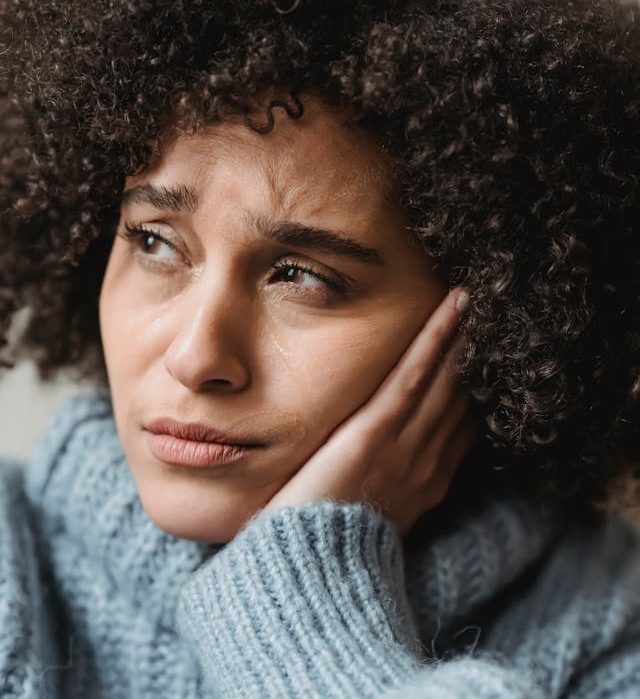Weight loss often brings with it a newfound confidence, but when it happens too quickly, it can lead to unexpected, and sometimes unwanted, changes. Many of those taking Ozempic have been caught off guard by a sudden change in their appearance. This is known as “ozempic face” and can be worrying for those experiencing it.
The term describes the changes that occur when rapid weight loss affects facial volume, often making features appear more aged or gaunt. To understand why this happens, it’s important to look at what causes these changes in the first place. Read on to find out what Ozempic is and how “ozempic face” can be treated.
To find out more about facial rejuvenation treatments in Beverly Hills, CA, contact Dr. Gabrielle B. Davis at (800) 805-3612, who will be happy to answer all of your questions.
What is Ozempic?
Ozempic is a treatment for those with type 2 diabetes. It is used to manage blood sugar levels by helping the body produce more insulin when needed and suppressing the amount of glucose produced by the liver. It is taken on its own or with other diabetes medications.
Weight loss is a common side effect when taking ozempic, as the active ingredient, semaglutide, regulates appetite, keeping you feeling fuller for longer. Although it is not an approved method for weight loss, some physicians may prescribe it for weight loss purposes.
What Causes “Ozempic Face”?
Ozempic can cause rapid weight loss, resulting in dramatic changes in your appearance. As fat decreases, the skin starts to sag, making wrinkles more noticeable. This effect is most visible in the cheeks, jawline, and under the eyes, where loss of volume can create a more aged and tired appearance.
With gradual weight loss, the skin has time to adjust and tighten naturally. But, with the rapid weight loss caused by Ozempic, the skin doesn’t have time to adjust. Lower levels of elastin and collagen further contribute to the looser, less resilient skin, and although weight loss affects the whole body, it is usually more noticeable on the face.
What Does “Ozempic Face” Look Like?
“Ozempic Face” is marked by a noticeable loss of facial volume, giving the face a hollow or sunken appearance. The cheeks may appear deflated, and the bags under the eyes can look more pronounced. The skin, no longer supported by underlying fat, may sag, particularly along the jawline, leading to the appearance of jowls.
Wrinkles and fine lines become more prominent as the skin loses elasticity, especially around the mouth, eyes, and forehead. There may also be changes in facial proportions, with lips, cheeks, and the chin appearing smaller or less defined. In some cases, uneven fat distribution can result in an imbalanced or asymmetrical appearance (lipodystrophy).
Can “Ozempic Face” Be Prevented?
While it may not be possible to completely prevent Ozempic Face, there are ways to minimize its effects and support skin health during weight loss.
- Lose Weight Gradually – Rapid weight loss is the primary cause of “ozempic face.” Losing weight gradually can give the skin more time to adapt and maintain elasticity.
- Eat a Balanced Diet – A protein-rich diet that includes lean meats, fish, eggs, and nuts helps maintain muscle mass and skin structure. Collagen supplements, particularly marine collagen, may also aid in preserving skin elasticity.
- Stay Hydrated – Drinking around 2 liters of water per day hydrates the skin, reducing the likelihood of dryness and sagging.
- Use Skincare Products – Using collagen-boosting moisturizers and serums such as retinoids may help keep the skin firmer for longer.
- Protect Against Sun Damage – Use a broad-spectrum sunscreen (SPF 30 or higher) to avoid UV exposure.
What Are the Best Treatments to Restore Volume After “Ozempic Face”?
“Ozempic Face” may be reversed with both surgical and non-surgical treatments. Dermal fillers can help replace lost volume, whereas facelifts can tighten or remove loose skin. A combination of treatments at Gabrielle B. Davis, MD Plastic Surgery may produce the most successful results.
Dermal Fillers for “Ozempic Face”
An effective non-surgical method to restore lost fullness and rejuvenate facial contours is with dermal fillers. Dr. Davis provides a range of injectable treatments, including Juvéderm® and Restylane®, which use hyaluronic acid to replenish volume and smooth wrinkles. Another option is Radiesse®, which stimulates collagen production for longer-lasting results. These treatments help restore plumpness to the cheeks, soften deep lines, and enhance overall facial balance.
Facelifts for “Ozempic Face”
When loss of volume and wrinkles are more pronounced, a facelift can provide a long-term solution by tightening loose skin and restoring facial contours. While injectables can effectively restore lost volume, they work well when combined with surgical techniques for more comprehensive rejuvenation.
Dr. Davis offers both traditional facelifts and the MACS (Minimal Access Cranial Suspension) technique, which uses a smaller incision for patients with mild to moderate sagging. Both methods tighten the SMAS layer, the deeper structure responsible for facial support, resulting in a smoother, firmer appearance.
Why Choose Dr. Gabrielle B. Davis in Beverly Hills, CA for Your Facial Rejuvenation Treatments?
Dr. Davis is committed to helping patients achieve natural, refined results while preserving the unique features that make them who they are. As a female plastic surgeon in Beverly Hills, CA, she brings a compassionate, patient-centered approach to every procedure, ensuring that you feel heard, valued, and fully informed before making a decision. To schedule a consultation with Dr. Davis,contact us or call (800) 805-3612 today.

